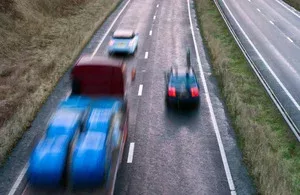The total road length in Great Britain has increased by 2,600 milies since 2010, an increase of 1.1%, meaning there is now of total of 247,500 miles of road.
This is according to the Department for Transport, that has released statistics presenting the estimates for public roads in Great Britain.
The statistics show that there were 31,800 miles of major road in Great Britain in 2020, consisting of 2,300 miles of motorway and 29,500 miles of A roads. There were also 215,700 miles of minor road in Great Britain in 2020,
consisting of 18,900 miles of ‘B’ road and 196,800 miles of ‘C’ and ‘U’ roads.
There were 700 more miles of major road in Great Britain in 2020 than in 2000, a 2.3% increase, with motorways contributing 100 miles and ‘A’ roads contributing 600 miles of that increase.
Whilst the overall length of ‘A’ roads increased by 600 miles between 2000 and 2020, the length of trunk ‘A’ roads decreased by 1,800 miles and the length of principal ‘A’ roads increased by 2,400 miles. This largely refects the Government’s de-trunking programme where centrally managed roads were transferred over to local authorities, with most transfers carried out between 2001 and 2003. There were 4,300 more miles of minor road in Great Britain in 2020 than in 2000, almost entirely driven by an increase in ‘C’ and ‘U’ roads.
The statistics cover ‘route miles’ and not ‘lane miles’ and so does not account for any additional capacity that has been added on existing routes. By length, the majority of the roads are managed by local authorities.
Traffic on the different types of roads is unevenly distributed. In 2019, where the latest road traffic estimates are available from, shows that 62% of motor vehicle miles travelled were on motorways and ‘A’ roads despite these only making up 13% of the total road network by length. The Strategic Road Network, managed by Highways England, is said to carry around a third of all motor traffic.



























